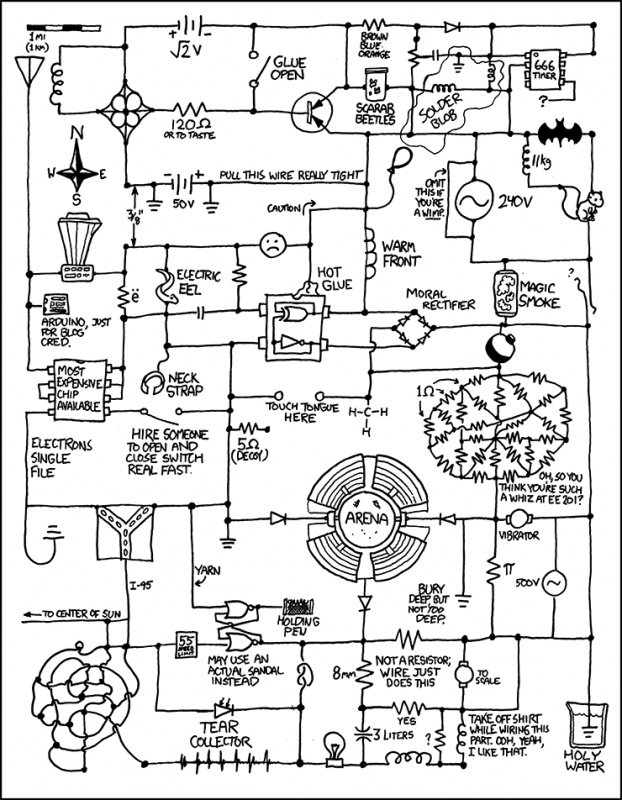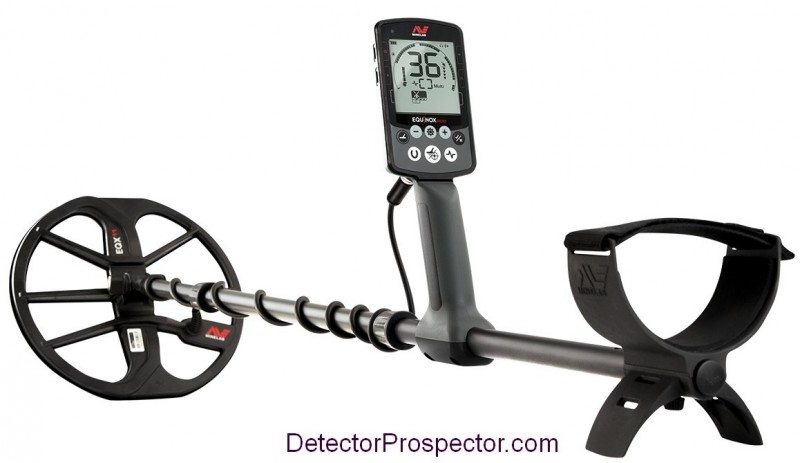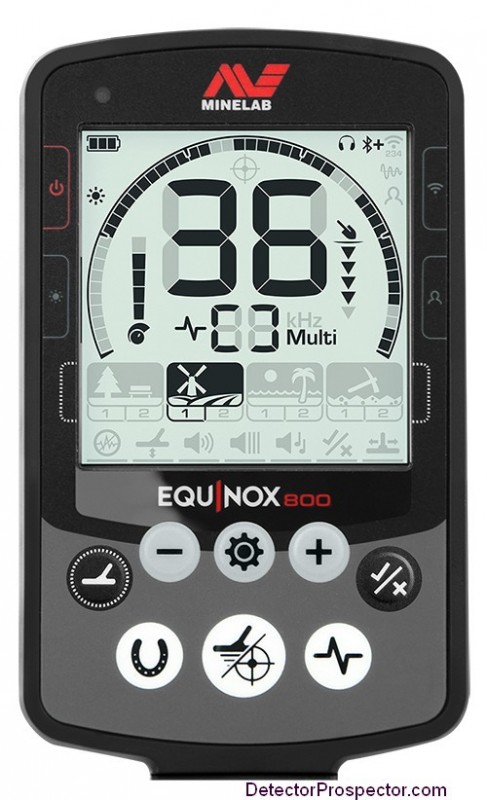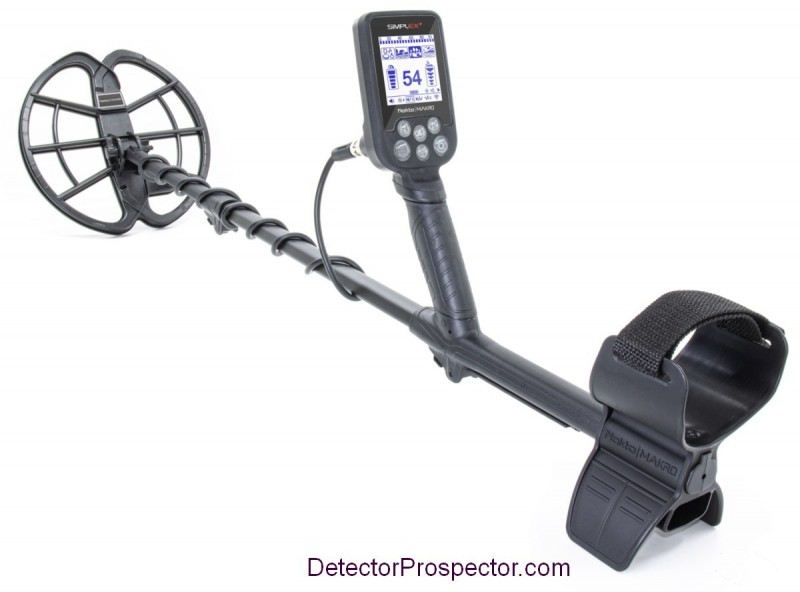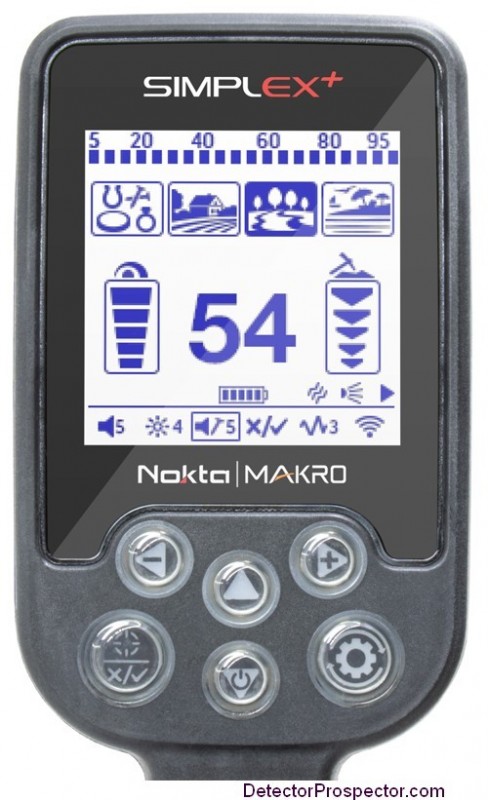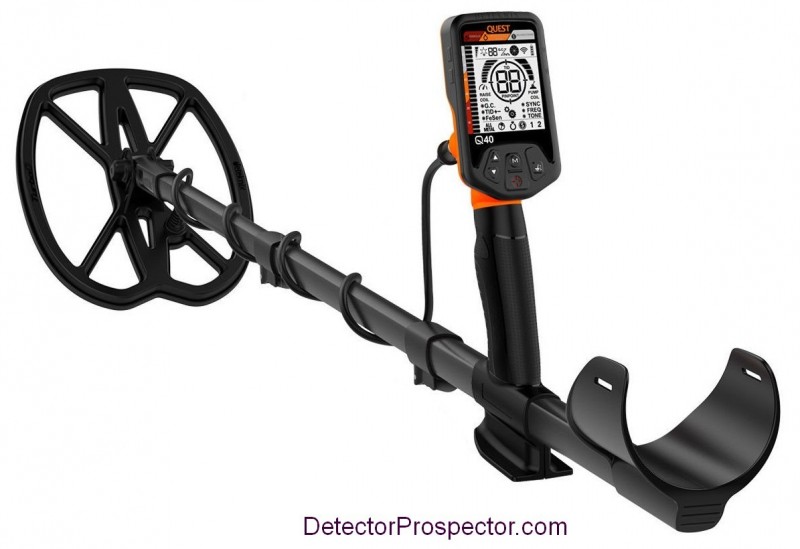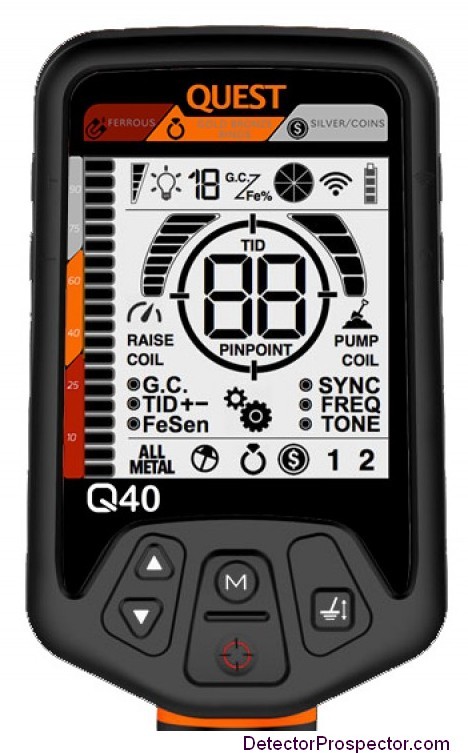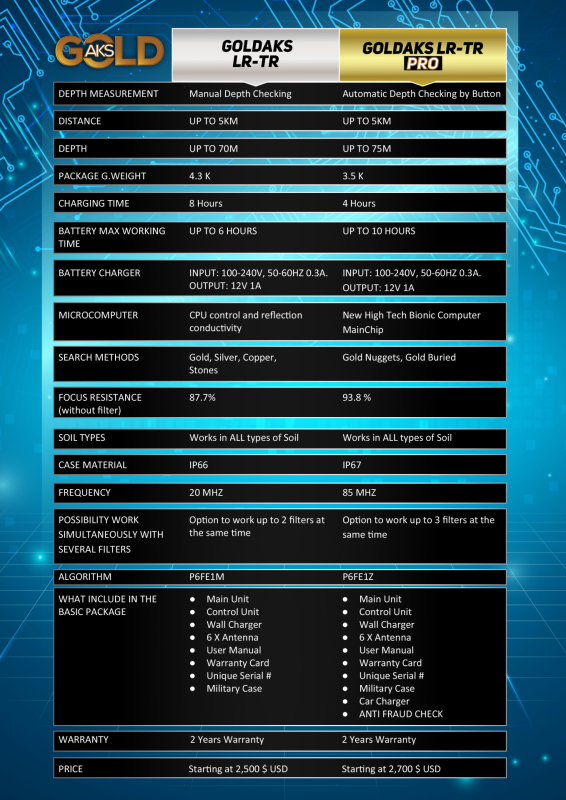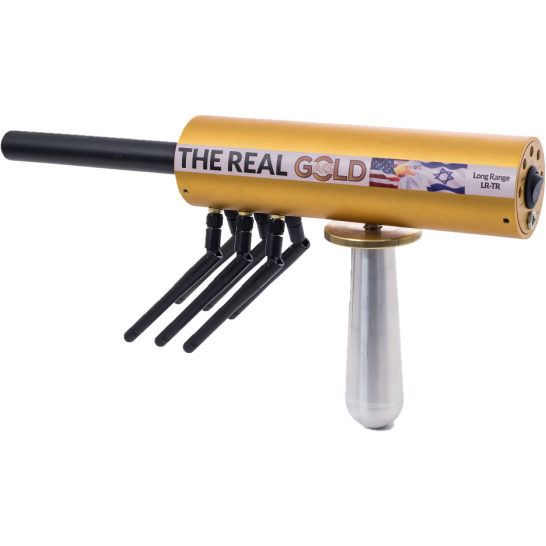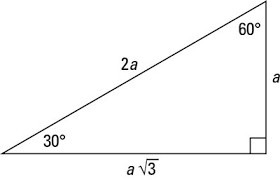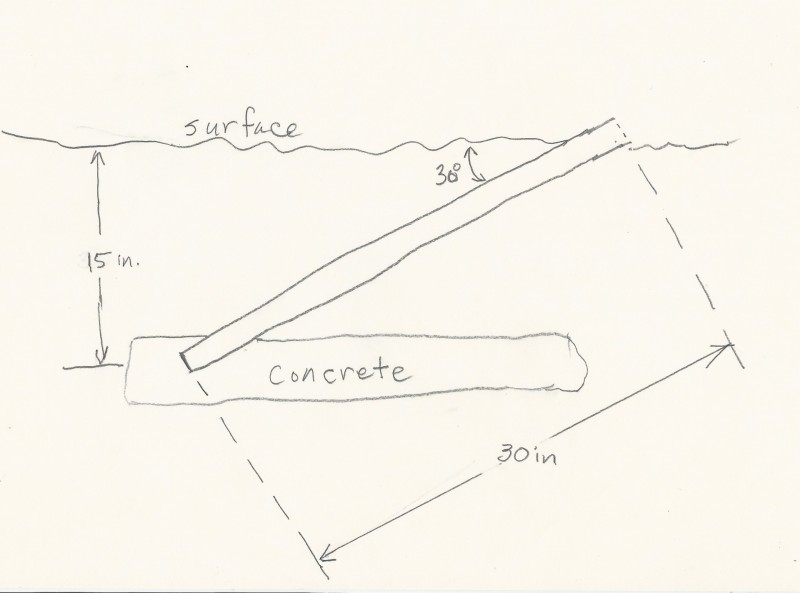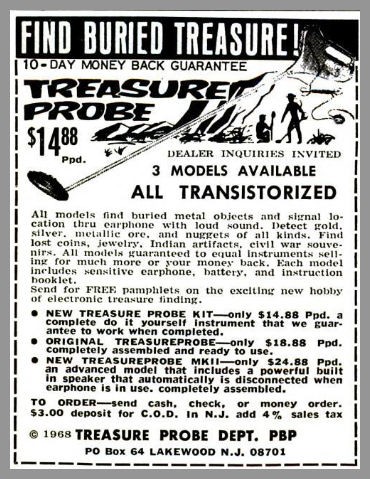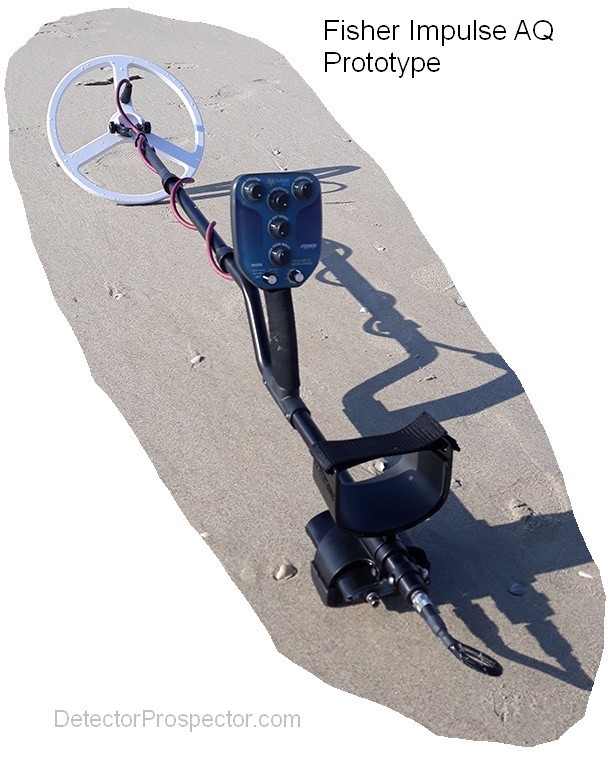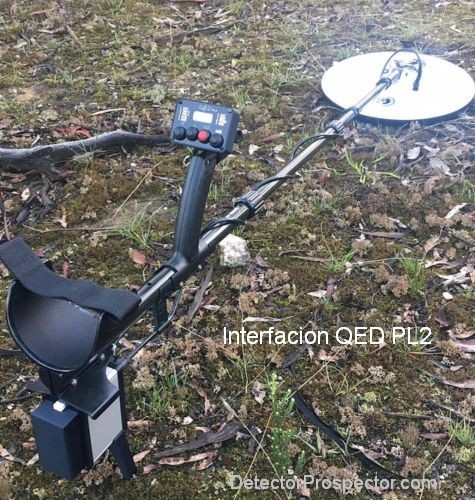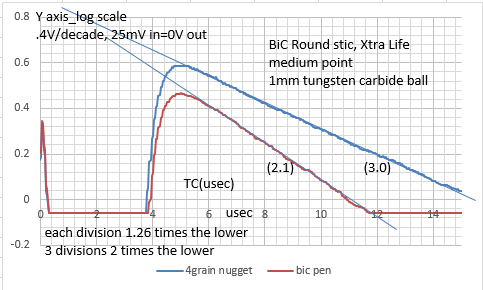Search the Community
Showing results for tags 'detector tech'.
-

All About Long Range Locators
Steve Herschbach posted a topic in Metal Detector Advice & Comparisons
From Wikipedia: "A long-range locator is a class of fraudulent devices purported to be a type of metal detector, supposedly able to detect a variety of substances, including gold, drugs and explosives; most are said to operate on a principle of resonance with the material being detected." There is more at the link, but "a class of fraudulent devices" says it all as far as I am concerned. I just wanted to post this so people can find it in the search results in case they are looking. For me these devices have always failed the most basic test... the experience of hundreds of thousands of prospectors and treasure hunters around the world. Treasure hunters and gold prospectors will give anything a try that might work, no matter how crazy it seems. If it works, the use soon spreads to other prospectors. You can Google genuine successful results for regular metal detectors all day long. The internet is full of successful people using normal metal detectors to make great finds. Except for a few obvious promotionals, the success stories of people using LRL devices are glaringly absent. All excuses for why this is so flies in the face of the simple common sense answer - they don't work. In almost 50 years of metal detecting and prospecting I have met a lot of successful people, and none of them got that way by relying on a long range locator. Part two of the common sense test is if they did work, there would be at least a few users of these devices that would be fabulously rich. The few I have met are anything but... just the opposite. Again, excuses made about why these rich LRL users are invisible fly in the face of common sense. Like wanting their privacy, as if we are not a country that brags about every tiny thing we can think of! The only people getting rich are the people selling these devices. I personally refuse to purchase anything from a company selling long range locators. It says something about the management of the company that makes me prefer to do business elsewhere. If you want the absolute best information on these device anywhere visit the website below. More at Geotech -
My brother knows I'm trying to build my own machine and sent me this diagram. Thought it was pretty funny 🙂
-
An add for the lack of experience, wisdom, or judgement prospector. MWF Gold Radar Long Range Metal Detector - Professional Gold Finder and Deep Seeking Geolocation Tracker - Premium Treasure Hunting by MWF Metal Detectors EXPLORE ANYWHERE: High end professional metal detector that gives you the power to search over multiple terrains. Using superior geolocation technology detect far more then before with the dual functions deep seeking and long-range target locating. GOLD FINDER: Unmatched in gold hunting capability! This detector is designed to accurately locate everything made of gold, like coins & jewelry to older relics and larger treasures. The ability of the Long Range Gold Line is 50 meters deep and 100 meters distance. IONIAN AND RADAR DETECTION SYSTEM: High quality and accurate performance, product manufacturing with the best electronic components and circuits up to international standards. works on a built radar detection system, to detecting and searching for radioactive ionization of the gold buried underground. MANUFACTURER WARRANTY: Guaranteed manufacturer’s warranty on all products. Detector Power is also proud to offer a hassle-free 15-day return policy. NOTICE - Bank authorization may be necessary prior to purchase to prevent order cancellation. Please confirm with bank prior to purchase to avoid order delays. New (1) from $6,999.00 Professional Gold Finders only 🤩.
-
Hi all If I'm using a vlf/lf that is over 40khz, is there any benefit to getting a 2nd machine that runs under 40 kHz when prospecting? Assume PI is not possible at the moment. Does a sub 40 bring anything special to the table? I'm a beginner so just curious Thanks
-
As much as I enjoy using the gm1000, especially in the auto modes, I can see how a Gold Monster PI machine would be popular. Grab and go, auto modes, under 5 lbs. Sounds great to me???
-
Not sure this is a topic for this forum, but this is where I see a large number of technically adept folks posting so I'm going to try (also the folks who are talking about x-coils on another forum). Has anyone had detecting experience around these 5G installations being rushed out everywhere across the world? It will be interesting to see what levels of interference are generated by this emerging technology. I personally am very much against it's roll-out because there are no deep studies that portray it as a safe-for-living-things technology, in fact the opposite seems to be true, but that aspect is probably not a topic for this website.
-
I welcome! Minelab is a hybrid MDS-10 Minelab multi-frequency metal detector and Ultra WideBand pulse radar from Chemring. In the summer of 2019, the Minelab MDS-10 project (version 2.0) was adapted to search for historical finds. For what I bought, for what I sell. Target sizes include coins and jewelry. Practical tests confirmed the effectiveness of the technology. In Russia expected that the novelty will be presented at the copy slate Detectival 2019. But alas... Does anyone know when? IMHO Minelab should enter the market of such devices.It is impossible to give the market all the time to LORENZ, MAKRO Detectors, Nokta, with ichony georadars. With respect.
-
Hello everyone .. I wonder if there anyone who uses a 3D metal detector to locate gold deposits @ around 15 to 20 feet deep... I have heard of larger nuggets of 1 and 2 pounds in size and gold deposits with 300 grams in a bucket of dirt being found in the river banks. Could a GPX with the New 30" coil could reach a 1 or. 2 pound nugget @ 4 feet deep... Im not interested in the finer gold just the bigger nuggets or a large concentrate of gold ..
-
I would like to see what any of you have created as far as displaying your metal detectors at home. I'm looking for creative ideas to make a home display myself. I'm entertaining many ideas from open to closed displays, even using Curio cabinets. To be clear, I'm looking for ways to display machines primarily, which could be mixed with finds as well.
-
This is a nice concept. If works I can see a lot of interest.
-
The cell phone is now a common day device owned by most people. It was inevitable that a metal detector designer would mimic the look and feel of a cell phone in an attempt to modernize how metal detectors are perceived. As far as I know it was Quest (back when they were named Deteknix) that first came up with this design. Or at lest they were the first to really market something like this in 2015. Then we next got the Minelab Equinox in 2018. And now the Nokta/Makro Simplex+ in 2019. Some might call this copycat designing but form follows function to a certain degree and all items copy others in some ways. All T-shirts have a head hole and two arm holes. Still, I think Deteknix/Quest gets the credit here for first popularizing this design. I'll be surprised if more are not to follow. Quest metal detector Minelab Equinox metal detector Nokta/Makro Simplex+ metal detector Quest metal detector controls & display Minelab Equinox metal detector controls & display Nokta/Makro Simplex+ metal detector controls & display
-
Occasionally I've read that an eddy current (set up by a metal detector's transmitted signal and which generates a magnetic field to be 'received' by the detector's circuitry) in detected objects are confined to that object's surface. If true this can be relevant for materials of mixed metals (no, I don't mean alloys) such as some coins and some crown caps, as well as plated objects like cheap jewelry. There is a simple exposition common to US coin hunting which disproves this contention. The US 5-cent piece ('nickel'), with the exception of 4 years during WWII, is an alloy of 75% copper (Cu) and 25% nickel (Ni). Modern US clad dimes and quarters (and some other denominations, all minted after 1964) are a sandwich composed of a pure copper layer in the middle 2/3 of the coin and two surface layers (each 1/6 of the coin's thickness) composed of the same Cu-Ni alloy as the 5-cent piece. The US nickel's numerical target identification (TID) on every(?) metal detector is considerably lower than a clad dime. Example 1: MInelab Equinox -- nickel hits 12-13 and clad dime 25-26, typically. Example 2: Fisher F75 -- nickel approximate TID = 30. Clad dime approximate TID = 70. Yet a US dime is smaller in both diameter and thickness than a US nickel. If only the Cu-Ni (outer) layers of the dime contained the eddy currents then the TID of a clad dime should be lower than that of the nickel, not higher. Conclusion: at least some of the eddy currents are in the copper core of US clad coinage and thus we can generalize that eddy currents aren't simply confined to the surface of metallic objects.
-
These discontinued Minelab products are really cool to look at and read about. I was amazed. The Golden Hawk looked cool! Wonder what the Klondike looked like. https://www.minelab.com/usa/support/knowledge-base/discontinued-products
-

Bundle The Notch Not A Good Thing
Ridge Runner posted a topic in Metal Detector Advice & Comparisons
If what we see of the face of the Vanquish is true with eighteen notch points then it’s bundled. This happens in lower end detectors but not totally true being it came in higher cost detector too My Sport wasn’t cheap but it too has the problem of having notch bundle . I have the ORX and to cut out anything I start at the bottom and work my way up . Like others I can’t pick what I want delete what I don’t want. The only one that we all know that will let you notch out what you don’t want and leave the others is the Nox . This is the main reason I don’t like my Sport is because of that. Don’t get me wrong I’d like it to run in more than one frequency but I knew that ahead of my purchase. I guess you couldn’t make me happy if you would hang me with a new rope. Just thinking out loud again! So why don’t you do the same here. Chuck -
Hi Guys, How many detector brands have Mixed Mode. Thanks in advance.
-
Just thought... it would be interesting if the technology ever came about where you could run one detector as either a VLF or a PI (orZVT). What machines would you combine? I would go GPZ and Equinox
-
I started this project 2 or 3 years ago (so long I can't remember). Spurred on by recent field experiences and also a recent thread on Equinox settings I've finally finished it. I don't know if it's a completely new idea. I call it a 'test-stand' as opposed to 'test garden' just to distinguish it from the standard test gardens many of you either already have or at least are familiar with. There are other similar variable depth test gardens out there (seen on YouTube). This one has the advantage of continuous depth capability. It also allows 3-d target orientation angle (similar to pitch, roll, yaw of airplane). It's based upon the 30-60-90 triangle (remember that from geometry/trigonometry class in high school?): Here is a sketch which shows how to implement this concept: Shown in the sketch, buried at an angle, is a PVC pipe. A test target can be slid into the pipe a distance 2*d which will result in it being located at depth d. I used two sections of pipe (ID = 1.57 in., OD = 1.90 in.), side-by-side to allow me to put neighboring targets in the ground with some option of how close the two targets are separated. Think of this as burying a double barrel (side-by-side) shotgun with the stock end deep in the ground. All you see are the ends of the two barrels. The concrete (bag of Kwicrete) locks the pipes in place. Here's a closeup of those extruding barrels: Besides the tape measure (units of inches) you also see a hand-graded scale at left which I'll explain shortly. Here is an overall view: The two PVC caps, attached together, are for keeping water, dirt, and varmints out of the pipes when not in use. You'll notice a 1.5 in. diameter wooden dowel rod inserted into one of the pipes. More detail on that shortly, but the target is inserted into the dowel near its end and then the dowel is slid into the pipe. Holes for locating pins (you can see one of those -- gray plastic -- inserted to register the intended depth) are 1 inch apart leading to a depth resolution of 1/2 inch. (Again, refer to the 30-60-90 diagram to understand the relationship between insertion length and actual depth into the ground -- a 2::1 ratio.) Next I show the business end of the dowel rod: The black foam fills the chamber and holds the target (in this case a silver dime) in place. The hole in the dowel is actually lined with a plastic film canister (remember those from 35 mm film days?) which has been modified to conform to the circular cross-section of the dowel and thus be able to fit into the pipe. The second slightly smaller) large hole was put in there originally for a second target but so far I haven't used it -- likely of limited value. You can see the registration holes. The first one has a red '2' (difficult to see) just above it; the next (representing 2.5" depth) isn't labeled; the third one has a '3'; etc. These represent the resultant depth of the target when a registration pin is put in that hole and then the rod slid into the pipe until the registration pin keeps the dowel from going deeper. Although the chamber packing material can be made up of many materials, I chose ethafoam (polyethylene foam) high quality packing material. You typically find this in higher end electronics packaging such as with desktop computers. More commonly it is white but in this case I used black. I initially cut plugs with hole saw (see next photo) and then trim with a pocket knife as needed to fit the pipe: Ok, so now you're still wondering what that specially graded (homemade 'yardstick') is for. Again, referring back to the 30-60-90 triangle drawing, the 3rd side of the triangle is also related to the depth. It is squareroot of 3 times the depth. (Squareroot of 3 = 1.73.) That yardstick will indicate how far downrange (along the ground surface) that the target is located. This helps when you get an iffy response on your detector and want to confirm or deny that the surface location of the target is consistent with its depth. The units written on the scale are associated with the depth of the target. You can see from the sketch above that the max depth is 15". The largest common US coin that will fit the chamber (with some force...) is a half dollar. I didn't keep track of the cost but it's probably $30 or so, mostly for the PVC pipe and caps and the dowel rods plus a bag of Sacrete. (I'm counting labor as free. 😁) OK, now that I (finally!) finished this test-stand it's time to get busy making measurements. I'll be posting those here on the forum as they become available.
-
Anyone remember the old Popular Science ads? I thought this was a good classic to share. Even though this ad pre-dates me by 6yrs, it puts a smile to my face :)
-
I’m not so sure if I really have a opinion but maybe each here may . So please let me hear from you on this subject. Thanks! Chuck
-
Yeah well as in inherently curious person, I was wondering when someone will design a smart phone app that makes your smart phone into a virtual metal detector. Might use a coil like the X35 on a carbon fiber shaft bluetooth connected or USB "c" connected. My Galaxy S10 + certainly has more than the processing power and ram required to do the job. Bluetooth headphone capable, gps, you name it. Just thinking again Johnny
-
I consider myself to be extremely fortunate due to the fact that the entire age of modern metal detecting has taken place over the course of my lifetime. I was too young in the 60's to be one of the many famous names that were there first on the ground with these new toys that go beep. That's good though for me as most of them are gone now and I'm still here. I got my first detector at the true dawn of the modern detecting age when I got my White's Coinmaster 4 in 1972. It was one of the first of the new "TR" machines that were the starting point for what most of us use today. Mine was as basic as a detector gets, no ground balance existed yet or discrimination. Just a couple inches depth and a beep, dig it up. So I have been involved in detecting now for 47 years. I started my business while in high school in 1976, and have been involved in metal detecting pretty much daily ever since. Anyone who followed my online presence starting in 1998 may see a pattern. I have been involved in some top end machines, some VLF, but basically almost every ground balancing PI made has been in my hands at some point. I had a vision in my mind based on my background in computers that told me what was possible and where we were headed. I was particularly incensed when an upstart company from Australia showed up the industry leaders at the time with the world's most powerful gold detecting PI machines. All the more so when I heard White's had a shot at it and passed. I made it my mission to jump on and foster anything that came along that might compete, and so I was involved with the Garrett Infinium, the first U.S. ground balancing PI. I had a lot to do with White's finally producing the TDI. Yet the fact is nobody ever seriously took Minelab on, and finally they won me over because they delivered when the rest just milked us. Minelab has been the sole company at the forefront of this technology since the SD2000 was introduced. All this time I have wanted two things. A vision in my mind of what a VLF could be. And a similar vision regarding a PI. Both those visions basically revolved around something a normal person could use both as regards ergonomics and price, two areas we kept getting bent over on for 20 years. Long story short I am grateful to Minelab for allowing me to be involved in the machine that delivered on my first vision. The Minelab Equinox is the first machine ever that really can do any VLF metal detecting task and do it well. In any one area it may not be "the best" but no one machine delivers across the board like the Equinox. My VLF quest is over. I will use an Equinox as my primary unit until a detector comes along, probably a Minelab, that does what it does but better. No more VLF buy and try for me. Yay! In 2017 I laid out my vision for the PI I wanted. The price was kind of a set the bar high (with a low price) thing so there is a little wiggle room there. But not a lot... the machine price should be something most people can stomach. As far as I am concerned the GPX 4500 sets the standard at $2699 both for performance and price. The TDI wins on ergonomics but loses too much in performance for me. All I really wanted was a GPX performance in an ergonomic package, and we all know it can be done. That is what is so frustrating. It's one thing to introduce new tech but all I want is proven tech packaged right. Garrett has really been a disappointment not putting the ATX in a light box. They can do it but so far have refused. I would have been satisfied with that. Right now I am calling the Australian made QED as being the default winner of my challenge. The rough edges have been smoothed out, and it's got the ergonomics, coil selection, and price all right. I am not going to argue with anyone over performance. Based on what I know it's good enough for me to go find gold and easily beats the TDI and is competitive with GPX. Good enough for me and good job boys. The only niggle is no FCC approval for U.S. sales, no U.S. dealers or service. But by end of 2020 if there is nothing better I will have one anyway. But we have the Fisher Impulse AQ on the verge and a dry land prospecting version promised. I would be crazy not to wait and see what develops there. I sold my GPZ for many reasons, mostly because I was not going to be detecting much this year, but I resolved when I sold it I would wait until my vision appeared. I knew it was close. I decided I can have fun enough with Equinox until that happens. Put as simply as possible I want a reasonably powerful PI packaged like a good VLF that most of us can afford. Something that can get in and out of a small backpack with an hour of labor being involved. So I am tossing down the gauntlet. I have my magic VLF and am looking for a mate for it. Right now QED and Impulse are in the running. And it's up to Minelab, Nokta/Makro, and sure, let's toss Garrett and White's in there also. It's time to deliver as by the end of 2020 I am getting one. I prefer in the spring but if something is one the radar I may wait. By 2021 I will be using something that finally fulfills what this high school kid from Alaska has known would happen someday. And I got to be there and see it all from start to finish. As I said... a very fortunate soul! Interfacion QED PL2 Fisher Impulse AQ
- 40 replies
-
- 16
-

-
- detector tech
- fisher impulse
-
(and 1 more)
Tagged with:
-
Try a standard Bic plastic ball point pen medium tip - small brass tip with 1mm tungsten carbide ball. Steve Herschbach has used it for years as a standard for testing gold detectors - also easy to stick in the sand and hard to lose. - and, of course available everywhere.Google Steve Herschbach bic pen and read what he has to say about it. It apparently behaves a very low conductive target. It presents in interesting test of the cut-off setting of a detector with iron discrimination - Might ve interesting for MantaHere’s the results one guy got with his nugget detector on various targets (the POINT - lol - is to show how tough a target the pen tip is....)”Bic Pen-3/4" 1/2 Grain (not gram) nugget 1" 1.3 gram nugget 5" . One tenth oz gold coin 8 1/2".. from Finds Technology Forum When I saw this posted the first time I tested some ball point pens from motels I had stayed at. Didn't have a Bic. Pen A(3.5us time constant) pen B(2.2us time constant) pen C(.65us time constant). Saw reply again the other day. Found Dollar General had 10 BiC Round Stic medium pens for a dollar, 1mm tungsten carbide ball. BiC(2.1us time constant). Charts a little less than a 4grain nugget I have. Wondering why test above has BiC pen closer to 1/2grain nugget than a 4grain nugget. Maybe missing I'm something. Thought I would go to the source to ask. The time constant of ball point pens can vary a lot, wondering if the one I used is the same as used in the test above. Does look like a BiC Round Stic medium tip would make a good test target.
-
We've spent a lot of time here lately on whether to X or whether to CoilTek. We don't know if we should Z or Q. We have so many choices we don't know what to do. Make life simple and get the app: This might be easier. Forget the coils and forget the manufacturer. ? https://play.google.com/store/apps/details?id=com.gamma.metaldetector&hl=en_US
-
The black stone is pure magnetite. The purpose of this prototype is discrimination that can indicates very deep targets such as for digging . So far all very deep targets were missed , as well as non-magnetic targets are indicated by discrimination like magnetic (iron ) . The prototype was tested on sand of pure magnetite and can be used to search for golden nuggets , while at the same time rejects the shallow iron objects . In tests on different soils shows very low soil noises , and almost complete absence of false signals . There is a video with the same prototype in youtube , from October 2018 .

